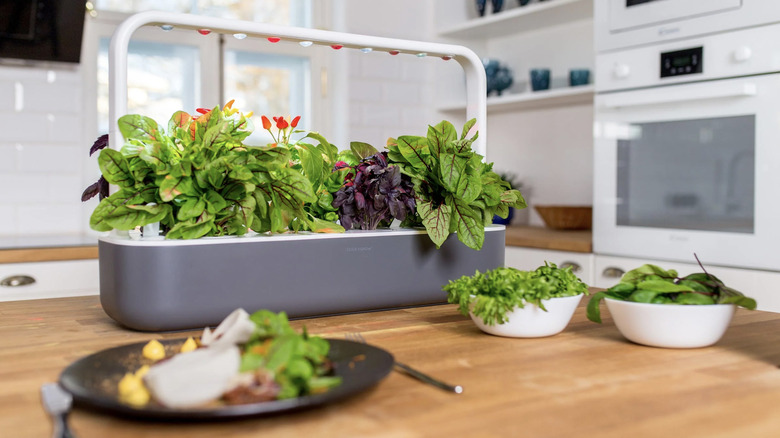Why A Smart Garden Can Improve Your Home, And How To Start One
It's the 21st century. Technology moves at the speed of light. And these days, you don't even have to wait for the weekly farmers' market to feast on freshly grown fruits and vegetables: With a smart garden, you can enjoy farm-to-table cuisine harvested straight from your living room.
By this point, you may be wondering – what is a smart garden, and should you buy one? Simply put, it's a computerized garden that sits on your countertop. The sophisticated technology in a smart garden monitors and controls the environment of your plants to ensure optimal growth. That means, yes, the smart garden does much of the work for you, but it will still tag you in to help, so you will still experience the rewarding feeling of growing healthy plants from seed and plucking your favorite greens straight from the source to make delicious recipes.
Needless to say, smart gardens are a game changer. Thanks to this technology, having a garden is no longer a privilege that is exclusive to those with a plot of land and a green thumb, as these devices allow you to grow a wide variety of herbs, fruits, vegetables, and flowers in a few simple steps, no matter the size of your home or the level of experience you have. Let's dive into the benefits of having a smart garden in your home and the easy steps to starting one yourself.
The benefits of having a smart garden in your home
Smart gardens will make your house, condo, or apartment into a happier, homier place in a number of ways. First off, beginners will be excited to hear that they are easy to use, even for those who've never planted a seed before. The key to this is that a smart garden is always monitoring the situation, and it makes sure you don't lose track. Intelligent technology notifies you when it is time to add nutrients, water, and prune your plants, making the process effortless. With some models, you can keep track of their progress in real time through a smartphone app.
Forget grocery runs. Rotted produce in the fridge? Not something you have to worry over anymore. Smart gardens allow you to grow all of the best indoor herbs with minimal effort, including basil, mint, dill, parsley, thyme, chives, coriander, cilantro, sage, and oregano. From there, branch out and cultivate greens such as lettuce, spinach, kale, and chard, as well as flowers like lavender, petunia, and snapdragon. Depending on the capabilities of your smart garden, you may also experiment with other fruiting plants like wild strawberries, mini tomatoes, and peas.
Whether you're an experienced gardener with a busy schedule or a newbie looking to earn your green thumb, smart gardens are a great tool. You can even get your little ones involved and make your smart garden a fun family activity. No matter what, smart gardens make gardening accessible.
How to start your very own smart garden at home
Ready to get started? First, select a smart garden according to your preferred size, budget, and features. Highly rated brands include Rise Gardens, Click and Grow, and AeroGarden. Many brands sell multiple smart garden models at various price points, and it's worth exploring the available options before deciding on one.
Each device comes equipped with a starter kit and instructions to create the perfect indoor garden, including prepackaged plant pods. The plant pods resemble K-Cups, but instead of ground coffee, they contain soil and the seeds capsules of your chosen plants. However, some models like the AeroGarden Bounty are hydroponic.
Once you've got your setup, place the plant pods into the cavities on the growing deck and ensure that the covers are secure. Add water to the reservoir according to the directions and place the smart garden in a designated area away from clutter and interference. Plug it into a power outlet, install the LED grow lights, and set up the companion app on your smartphone. At this point, you will be well on your way to your first harvest. The garden's user-friendly interface and real-time notifications will help you keep on track. Ensure that you are cleaning the water tank at regular intervals and following the directions closely. Within a few weeks, your first batch of fresh greens will be ready for harvesting.


